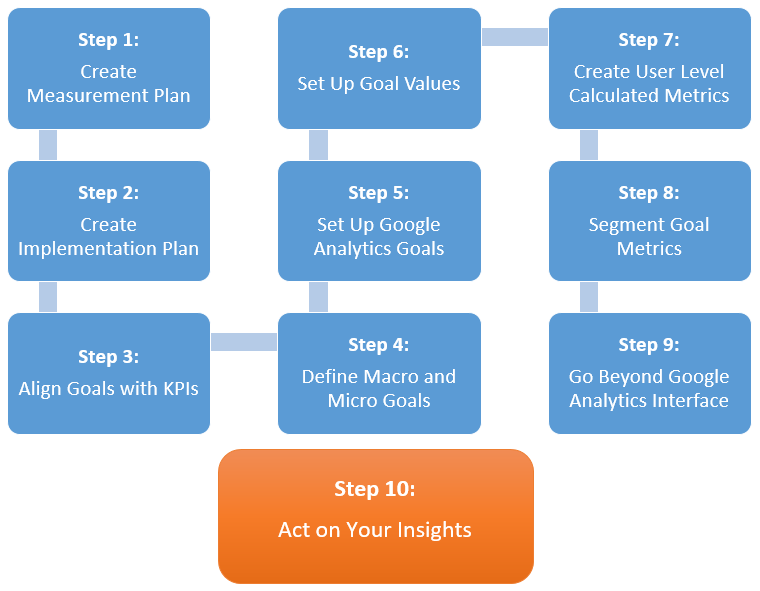What Data Is Google Analytics Goals Unable to Track and Why
What Data Is Google Analytics Goals Unable to Track and Why
Blog Article
Discover the Limitations of Google Analytics Goals: Introducing the Data Kind That Remain Untrackable
As services significantly count on data-driven decision-making, understanding the limitations of devices like Google Analytics becomes paramount. While Google Analytics Goals offer valuable understandings right into user communications, there exist information types that thwart tracking, posing obstacles to an extensive understanding of customer habits. These untrackable information types question concerning the precision and completeness of the analytics information that companies greatly trust for their electronic methods. Curious to discover the covert unseen areas in your data analysis process?
Insufficient Individual Journey Tracking
Insufficient user trip tracking within Google Analytics can hinder the capacity to precisely examine customer behavior. When the individual trip is not totally tracked, there are spaces in the data that prevent an extensive understanding of just how individuals connect with a site. This absence of understanding can cause missed out on chances for optimization and renovations to the customer experience.
One usual concern with insufficient user journey monitoring is the inability to see the complete path that users take before completing a goal or leaving the website. Without this info, it is challenging to recognize where users might be encountering barriers or rubbing points that stop them from transforming. Furthermore, incomplete tracking can obscure the effect of particular advertising initiatives or web site modifications on individual habits.
To address this limitation, it is vital to set up proper monitoring systems within Google Analytics to catch the whole customer trip. This may include establishing occasion tracking, goal funnels, or utilizing devices like Google Tag Manager to make sure that no important interactions go unrecorded. By gaining an extensive view of the individual journey, internet site owners can make more enlightened choices to boost customer engagement and drive conversions.
Attribution Challenges
Browsing with acknowledgment obstacles in Google Analytics calls for a thorough understanding of exactly how various touchpoints add to the total conversion procedure. Attribution challenges develop from the complexity of modern-day consumer journeys, where users communicate with numerous channels before transforming. Google Analytics provides various attribution designs like first touch, last touch, and linear, each using a different perspective on how debt is designated to touchpoints along the conversion course. These models may not always accurately show the true effect of each touchpoint on the conversion.
One common attribution challenge is the problem in attributing conversions to the right resource, specifically in situations where customers connect with numerous networks before transforming. This can result in errors in identifying which advertising and marketing initiatives are driving the most conversions. Additionally, cross-device tracking positions another attribution difficulty, as individuals often switch over in between devices throughout their trip, making it testing to track their communications seamlessly. Marketers need to very carefully analyze and translate attribution data to make educated decisions and optimize their advertising techniques efficiently.
Offline Conversions
Provided the challenges linked with connecting conversions precisely in online networks, the measurement of offline conversions presents a significant opportunity for marketing experts looking for a much more detailed understanding of their clients' trip. Offline conversions describe actions that customers take in the real world, such as making purchases in brick-and-mortar stores or over the phone, participating in events, or involving with published materials - what data is google analytics goals unable to track. These conversions are critical for services that run both online and offline, as they supply beneficial understandings right into the effectiveness of advertising campaigns across different touchpoints
Tracking offline conversions typically postured a considerable difficulty for marketers, as it was testing to connect these activities back to details on-line communications accurately. With innovations in modern technology, such as the combination of CRM systems, unique identifiers, and discount coupon codes, companies can currently connect the void in between online and offline information to get an extra alternative sight of consumer behavior. By efficiently gauging offline conversions, marketing experts can enhance their techniques, allocate sources a lot more efficiently, and inevitably enhance the general consumer experience.
Cross-Device Monitoring
Cross-device monitoring plays an important function in comprehending the interconnected nature of customers' electronic interactions throughout several gadgets. In today's omnichannel world, where users perfectly switch in between desktops, tablets, and mobile phones, tracking their behavior throughout these devices is vital for online marketers to gain a detailed sight of their customer journey.

In addition, privacy concerns and laws such as GDPR and CCPA have further challenging cross-device tracking. With individuals demanding even more control over their here information and boosted restrictions on monitoring modern technologies, online marketers have to find innovative and privacy-compliant means to connect user communications throughout tools.
Dynamic Material Engagement
Comprehending customer engagement with dynamic web content is crucial in enhancing electronic advertising and marketing methods for improved audience communication. Dynamic web content describes web site elements that alter based on user actions, preferences, or various other aspects, offering a customized experience. Nonetheless, tracking customer interactions with dynamic material postures difficulties for traditional analytics tools like Google Analytics.
While Google Analytics can track standard interactions like clicks and web page sights, it may struggle to capture even more nuanced engagements within dynamic content. what data is google analytics goals unable to track. Metrics such as time invested in certain vibrant aspects, hover activities, or communications within pop-ups are usually not conveniently quantifiable using common monitoring approaches. This restriction impedes marketers' capacity to fully comprehend how users are involving with vibrant content and customize their techniques accordingly

Final Thought
To conclude, Google Analytics objectives have limitations in tracking insufficient customer trips, connecting conversions accurately, recording offline conversions, tracking cross-device communications, and gauging dynamic content involvement. These constraints highlight the significance of exploring additional monitoring approaches and tools to obtain a much more extensive understanding of customer habits and conversions past what Google Analytics can supply.
While Google Analytics Goals deal valuable understandings into customer communications, there exist data types that avoid tracking, posturing challenges to an extensive understanding of user habits.Insufficient customer journey tracking within Google Analytics Extra resources can hinder the ability to accurately assess customer actions. When the user journey is not fully tracked, there are gaps in the data that prevent a comprehensive understanding of just how individuals engage with an internet site.One usual concern with incomplete customer trip monitoring is the inability to see the complete course that individuals take in the past finishing an objective or leaving the site. By gaining a comprehensive sight of the user journey, site proprietors can make more educated choices to improve user engagement and drive conversions.
Report this page